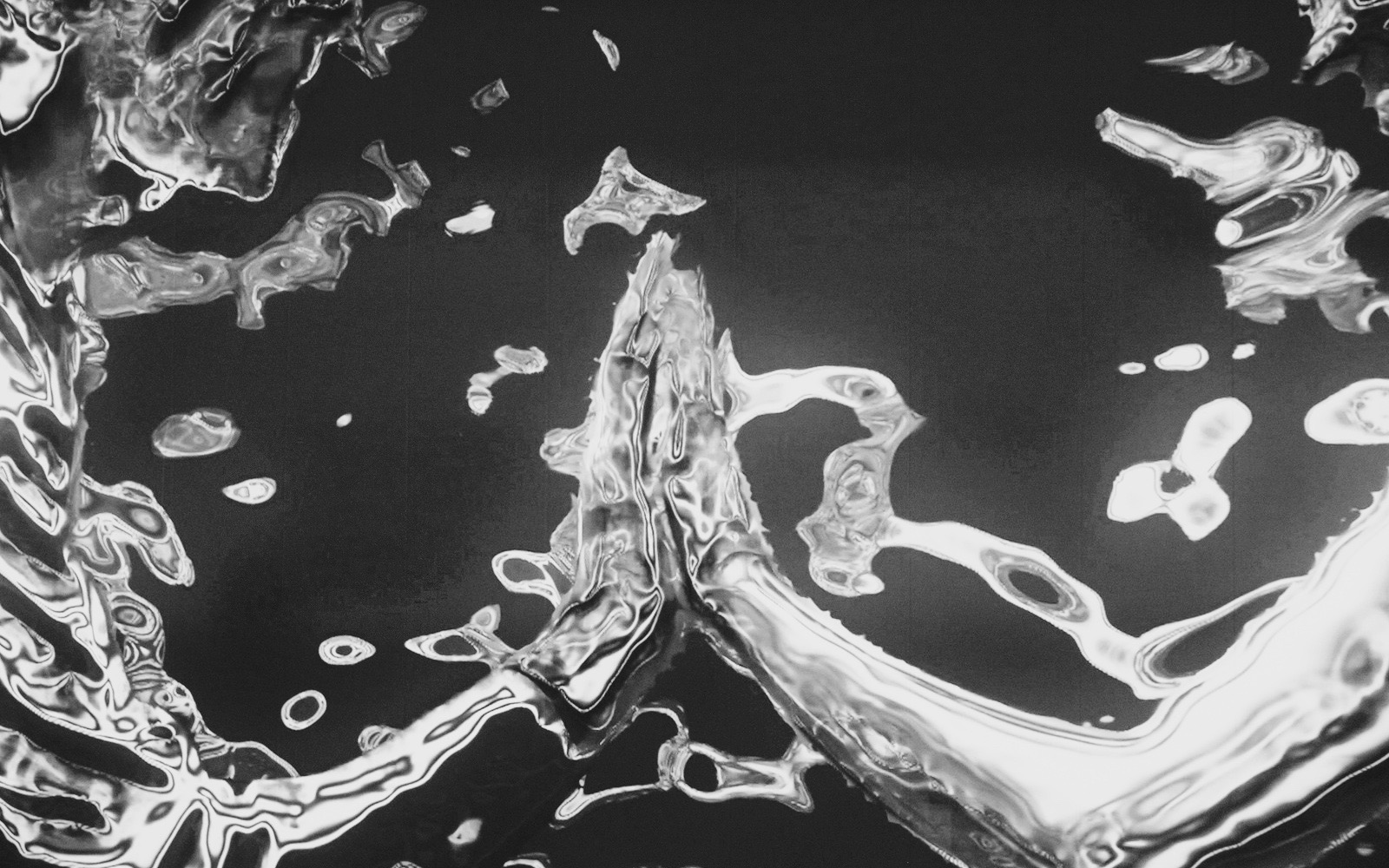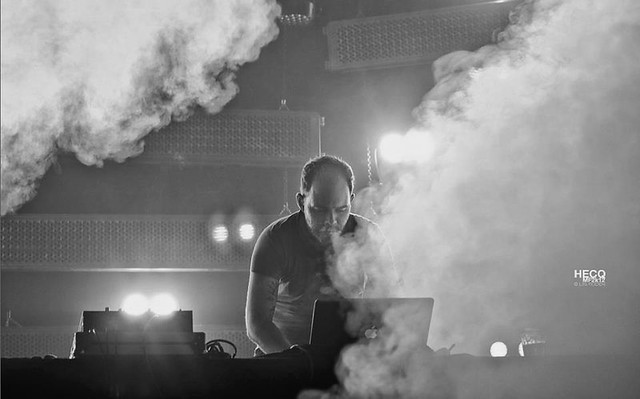Fear Anger Love // CTM 2017

The defining triad of this year’s CTM festival was FEAR, ANGER, LOVE. A theme appropriately broad, as the festival has enormous scope, though it may at first glance appear to be too all-encompassing to carry any real meaning. Doesn't all art express some form of fear, anger or love? Then again, the festival is decidedly pluralistic. It tries not to push a message home, but allows the artists to do their thing. It can be a daunting task to see even a fraction of the events on at CTM. You can find music, films, exhibitions, talks and workshops stretching out over 10-days, 15 venues and 173 acts. Any review of the festival will thus be a mere snapshot. But here are some of our highlights.
A welcoming introduction featured an exhibition exploring the past and present of experimental music and sound art in Mexico. Entitled ‘Critical Constellations of the Audio-Machine in Mexico’, the exhibition explored the musical styles and sound experiments that have emerged in the country since the beginning of the 20th Century. It followed the role of machines in modernisation and the logics of rupture in resisting a neo-liberal takeover of the country. There were sculptures made of magnetic cassette tape, non(or anti)-conventional musical scores and instruments made with ‘unstable tunings’, that shifted up and down into a nauseating trance. Artists also argued for Mexico City as a place of futurism. Not a futurism forged through a series of well-organised efforts, but one which emerged through a bustling rhythm of contradictions. It’s a city that maintains a difficult mix of technical and industrial modernism with pre-Hispanic indigenous cultural identity. Whether intentional or not, it worked as a forceful ‘fuck you’ to the Trump-laced racism of our present moment.
Almost embodying this futurism channelled through the past — not to mention the ‘fuck you’ to the present — was Elysia Crampton’s presence at the festival. Gliding onto the stage at the Festsaal Kreuzberg she quietly announced ‘I’m going to ask the ancestors for help with this one’. It was clear she received the help she had asked for, appearing almost possessed as contemplative midi piano chords swelled into her signature collage of abrasive SFX samples and pentatonic spirals, with Crampton at one point leaving her keyboard to screech into the microphone. All traces of the previous night’s hangover were effectively shaken out of the audience. Crampton’s performance was illuminated (but by no means circumscribed) by a discussion she took part in with Hengameh Yaghoobifarah and Tactical Technology collective member Leil Zahra a few days before. As opposed to being a lecture from on high, this discussion fostered solidarity and collectivity both through the intimacy of the space and through the fact that each discussant made revealing and tender contributions alongside more pragmatic debates over what sort of tactics could be used for resistance and survival. The ‘we’ that spoke in these conversations was never patronising or falsely unifying, but allowed for a shared experience of anger and love (and of course, fear).
 Elysia Crampton. Photo by Udo Siegfriedt.
Elysia Crampton. Photo by Udo Siegfriedt.
The warmth of such a space was somewhat lost in the larger discussion ‘Against Neutrality: What can a Decolonised Dancefloor Do?’, a panel chaired by the wonderful cultural critic and DJ madison moore and featuring nkisi, Diana Arce, Kiddy Smile, Aérea Negrot and Mic Oala. While the thrust of the discussion felt urgent, the format (by no fault of the individual artists) seemed to lend itself more to the advertising of personal projects and occasionally bordered on prescriptions of the correct forms of consumption. But when given the chance to let the work speak for itself it was clear the political import went far beyond the (temporal and spatial) limits of the discussion. nkisi put it best in her framing of sound itself as a form of knowledge, and of the dancefloor as a kind of commons that could itself create new forms of community and relations. While it may be the case that artists aren’t always the best at explicating the politics of their own work, one of the benefits of CTM was that there was the opportunity to see both the art and the artist in action, and so discussions like this were never intended to stand alone.
The festival also held up a space for artists within a particular geographical enclave, including Norwegian dance music and the international African diaspora of the NON collective. One such partnership with Tehran’s SET festival presented works at the forefront of the Iranian capital’s electronic music scene. In an exciting commission entitled “Sacred Horror In Design,” Ata Ebtekar (aka Sote) collaborated with performers Arash Bolouri and Behrouz Pashaei on a project merging electronics with traditional Persian acoustic instruments (santoor and setar) for a "Persian techno apocalypse." The evening paradoxically preserved Persian traditionalism while simultaneously bending it out of all recognition. In a talk on contemporary sound in Iran, Sote spoke of the city’s defiance against exoticism and pigeon-holing. Iran is one of the seven countries Trump has attempted to ban travel from, and such defiance and clarity is therefore clearly needed. But when asked what Tehran’s noise scene is operating in response to, Ebtekar simply replied, “pollution”.
 Sote, Arash Bolouri and Behrouz Pashaei. Photo by Stefanie Kulisch.
Sote, Arash Bolouri and Behrouz Pashaei. Photo by Stefanie Kulisch.
One of the more unexpected (but welcome) experiences of the festival was seeing the experimental vocalist Stine Janvin Motland, who preceded fellow Scandinavian avant-pop prodigy Jenny Hval. Motland’s performance is technically quite simple to describe: a half-hour of highly precise and uninterrupted circular singing with a delay effect which forced antagonistic frequencies to collide, while a light stuttered against her sharp outline. Yet the effect was far too visceral to describe with any sense of accuracy, the sound consuming the entire space of the massive Hebbel am Ufer. Perhaps the closest description would be to imagine how Homer’s sirens would have sounded if they had been intended to drive men away, or perhaps more contemporaneously, they suggested the mechanical siren which calls out our current state of emergency, constant and unrelenting.
The expressed intention of CTM festival is to, “Make space for radical forms of musical expression and dissonant emotions”. Part of what makes this an interesting project is its incongruence against the staples of Berlin music culture. Berlin’s industrial spaces have been repurposed to accommodate sounds at the periphery. The concrete slabs and towering walls that Berlin is so well known for are imbued with a different meaning. It now makes sense to hear ‘Hotline Bling’ in Berghain. The city’s stagnant insistence of floor-thump 4X4 and brooding ambient seems to be finally shedding. The city owes something to CTM for decoupling these spaces from their techno-alliance. As Plato once said, “when the mode of the music changes, the walls of the city shake.”
 Kunsthaus Bethanien. Photo by Udo Siegfriedt.
Kunsthaus Bethanien. Photo by Udo Siegfriedt.
- Published
- Feb 12, 2017
- Credits
- Words by Laurel_and_George
